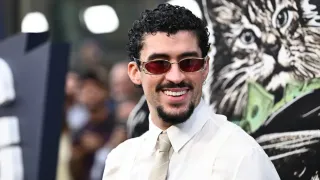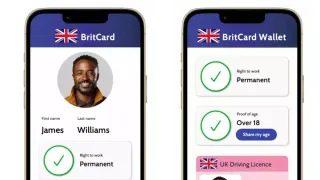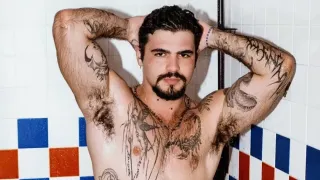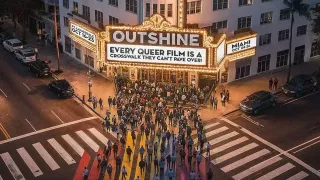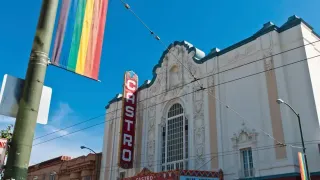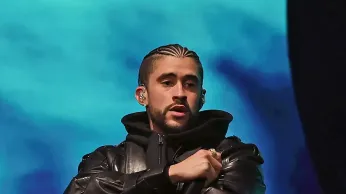
4 hours ago
Bad Bunny Empowers and Unites: “I Do Music for Everyone Who Feels Left Out, For Those Who Are Searching For a Space to Be Themselves"
READ TIME: 17 MIN.
In a year marked by shifting tides in pop culture, few events have resonated as deeply as Bad Bunny’s “No Me Quiero Ir de Aquí” residency in San Juan’s José Miguel Agrelot Coliseum. Spanning 30 electrifying shows over 10 weeks, the residency was more than a homecoming for the Latin superstar—it became a beacon for cultural pride, resilience, and inclusive celebration, drawing fans from across the LGBTQ+ spectrum and beyond. The residency not only paid tribute to Puerto Rico’s evolving identity but also created a rare space where queerness, music, and belonging intersected under one roof .
For many attendees, the experience was transformative. “There was a certain electricity in the air when you stepped off the Tren Urbano and arrived at El Choli. People who hadn’t seen each other in a long time were embracing one another. There was warmth, laughter, and a euphoric fervor that lingered long after the night was over,” recalled Gabriela Burgos, 27, a Puerto Rican who traveled home for the concerts . For many LGBTQ+ Puerto Ricans and visitors, Bad Bunny’s music—and the communal space it fostered—offered not just nostalgia, but a sense of affirmation and shared identity.
Bad Bunny’s influence extends far beyond catchy reggaeton beats and viral choreography. Songs like “Debí Tirar Más Fotos,” released in January, have inspired listeners to reconnect with their roots, regardless of where they are in the world . His lyrics often speak to longing, love, and the complexities of home—sentiments that resonate powerfully within LGBTQ+ communities that frequently grapple with themes of migration, chosen family, and acceptance.
The residency’s impact was not limited to emotional resonance. By attracting both locals and tourists, Bad Bunny’s concerts reportedly boosted Puerto Rico’s economy by an estimated $200 million . This economic uplift was matched by a renewed sense of cultural pride, with concertgoers describing the shows as “for us”—a rare moment of collective joy and visibility.
Throughout his career, Bad Bunny has distinguished himself as a vocal ally to LGBTQ+ people, using his platform to challenge machismo, gender norms, and discrimination in Latin music. In recent interviews, he has reiterated his commitment to inclusion: “I do music for everyone who feels left out, for those who are searching for a space to be themselves,” he shared in a widely circulated interview earlier this year . His fashion choices—often subverting gender expectations—and outspoken support for transgender rights have made him a symbol of progress and hope for queer fans, particularly in regions where LGBTQ+ rights remain contested.
Andrea, a concert attendee, described the transformation she witnessed at Bad Bunny’s residency: “During my first function, the intro started and everyone immediately stood up, almost no phones… There are definitely people going for the sake of being able to say they went. … But it’s an opportunity for visitors to learn more about our culture on top of the booze and the live music” . For LGBTQ+ fans, the concerts became a sanctuary—a place to dance, express, and simply be.
In the midst of his residency, a surprise engagement announcement captured headlines and hearts. During one of the final shows, Bad Bunny took a moment to celebrate love, marking the occasion with a heartfelt dedication that resonated with many in the audience . While details remain private, the gesture underscored his ongoing support for love in all its forms—a theme that has endeared him to queer fans worldwide.
The residency’s conclusion was bittersweet for many. As the lights dimmed on the final night at El Choli, there was a palpable sense that something profound had transpired. “As time passes, Puerto Rico changes… But the energy at Bad Bunny’s residency was a reminder that while things may transform and the island faces its numerous difficulties, the spirit of its people persists,” wrote one attendee in a reflective essay .
Bad Bunny’s momentum shows no signs of slowing. News broke recently confirming that he will headline the upcoming Super Bowl halftime show,. This announcement was met with widespread excitement from LGBTQ+ communities and allies, underscoring his expanding influence and the shifting landscape of mainstream entertainment. As anticipation builds, many see his Super Bowl performance as an opportunity for visibility, cultural pride, and unity on a global stage.
At its core, Bad Bunny’s music—and the communal experiences it fosters—remains a lifeline for those seeking belonging, joy, and affirmation. For queer fans in Puerto Rico and across the globe, his art offers a reminder: no matter where we are or how the world changes, music can be a bridge—to home, to each other, and to a future defined by inclusion and love.
